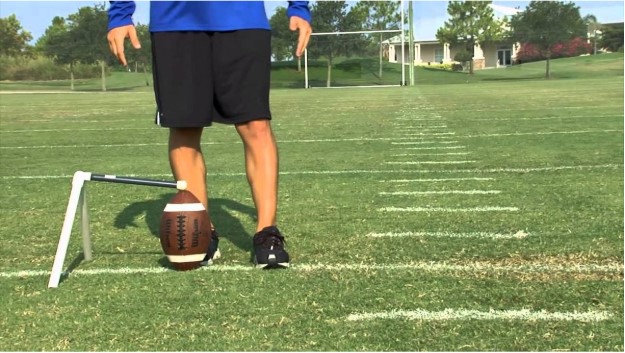Among all the specialized skills, kicking holds a unique space in football. Whether it’s launching a field goal or pinning the ball deep in the opponent’s zone, a well-trained kicker can change the entire course of a game. But football kicking training is more than just a way to win points—it’s a gateway to full-body athletic development.
Building Coordination and Timing
Every successful kick demands a perfect sequence of movements. From the moment the ball is snapped, a kicker has seconds to plant their foot, align their body, and strike with precision. This kind of synchronized effort trains the brain and muscles to work together efficiently. Over time, athletes develop sharper coordination and faster reflexes. These improvements extend beyond football, enhancing performance in any sport where timing and control are critical.
Improving Strength Through Football Kicking Training
Football kicking training is the focused development of the skills and mechanics needed to strike a ball with power and accuracy. It builds explosive strength in the lower body, especially in the quads, hamstrings, and calves. Training routines often include resistance workouts, flexibility drills, and targeted leg exercises. These help kickers generate more force while keeping their movements smooth and controlled. In the end, this type of training not only makes better kickers—it builds stronger athletes.
Boosting Balance and Core Stability
Maintaining balance while executing a powerful kick is no easy task. Football kicking forces the body into single-leg positions and unusual angles. This activates the core muscles and stabilizers throughout the hips and lower back. As a result, athletes learn to stay grounded even during fast-paced plays. That core strength translates to better posture, safer landings, and improved stability across other athletic movements. It becomes a hidden advantage in both contact and non-contact sports.
Sharpening Mental Focus With Football Kicking Training
There’s a psychological edge that comes with repeated kicking drills. The football kicking training teaches athletes how to block out distractions, manage pressure, and maintain a clear focus. Kickers are often put in game-deciding moments, and those high-pressure reps build mental resilience. Over time, this mental training shapes athletes into calm, confident players who can perform when it matters most. In the final seconds of a match, mindset can be the difference between victory and defeat.
Encouraging Discipline and Consistency
Athletes don’t become skilled kickers overnight. The process involves repetition, patience, and daily commitment. Football kicking requires consistent form and regular feedback to make progress. This structure teaches young athletes the value of routine and long-term effort. These lessons go far beyond the football field. In school, training, or any competitive setting, the discipline learned through kicking practice becomes a powerful personal tool.
Enhancing Agility and Footwork
Though often overlooked, the footwork involved in a proper football kick is detailed and dynamic. Kickers practice controlled steps, sharp pivots, and quick readjustments. These drills help athletes move with more agility and precision. Whether sprinting downfield or dodging a tackle, quick footwork adds an extra layer of advantage. As athletes grow more agile, their speed and reaction time also see noticeable gains.
Conclusion
Football kicking training offers far more than a scoring edge—it’s a total athletic development program. From muscle strength and coordination to mental focus and self-discipline, each element contributes to making a more complete athlete. Even players who don’t specialize in kicking can benefit from integrating parts of this training into their routines.

